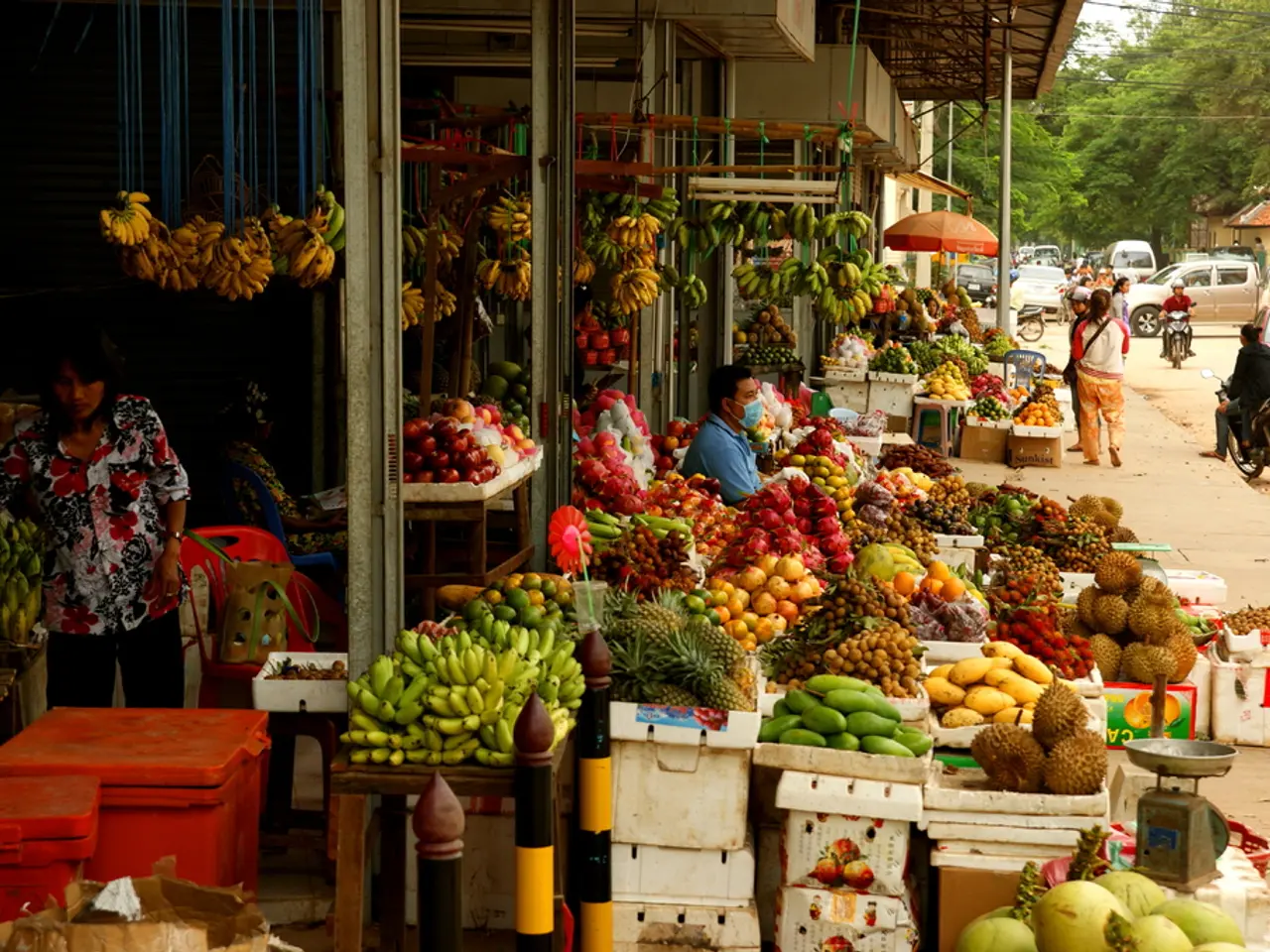Increased Demand for Matcha Outpaces Japanese Farm Production
The global matcha market is experiencing a significant boom, with projections suggesting it could reach between $3.67 billion by 2025 and over $6 billion by 2030[1][5]. This growth is driven by surging global demand, particularly in North America, Europe, and emerging markets, as consumers become increasingly interested in functional foods, plant-based diets, and premium beverages[1][5].
However, this expanding demand is creating significant supply challenges. Japan, the key historical matcha producer, faces a supply crunch caused by a combination of factors:
- Climate change impacts: A record-breaking 2023 heatwave in Kyoto damaged tea bushes, reducing yields substantially[2][3].
- Aging agricultural workforce: Fewer young farmers are entering tea cultivation, raising long-term sustainability concerns[2].
- Increased demand from global markets: Western consumers, fueled by social media trends and health consciousness, have intensified demand, leading to sold-out inventories and rationing by suppliers[2][3][4].
- Post-pandemic tourism boom in Japan: Surpassing previous visitor records in 2024 intensified local demand on limited supply[4].
- Supply chain pressures: Including rising tariffs and bulk purchasing patterns affecting availability and pricing[2].
Producers are responding by promoting the use of lower-grade matcha for beverages and baking to preserve premium matcha for traditional consumption. However, prices are rising due to limited harvest yields and sustained demand growth[2][3].
In Japan, Kyoto-based fourth-generation tea farmer Masakazu Morii, who runs a pesticide-free farm, has noticed demand rise and has been forced to raise prices due to limited supply[6]. At nationwide auctions, prices for matcha have gone up by an average of 50%, and in Kyoto, auction prices have skyrocketed, sometimes reaching 300% to 400% higher than the previous year's[7]. Wholesale prices for matcha have risen significantly, with Miro Tea founder Jeannie Liu reporting a 250% increase in the price she pays for Uji matcha over the past few years[7].
The demand for matcha has led to a global shortage and rising costs, due in part to extreme weather exacerbated by climate change affecting harvests. This year's harvest for matcha leaves is 10% smaller than last spring's due to droughts and the country's hottest summer on record[8].
The Morii family and their team are adapting to climate change by using special tea fans and covering fields with sheets to protect their crops from extreme weather[9]. Japan's Ministry of Agriculture has announced subsidies for tea factories looking to convert to tencha production to increase the cultivation and supply of matcha[10]. However, the process of converting tea factories to tencha production can cost millions of dollars and would require small, often family-run businesses to take out disproportionately large loans[10].
Regionally, the market shows robust dynamics. In the Americas, growth in health-oriented cafes, specialty drinks, and functional foods drives demand, especially in the U.S.[5]. In Europe, Middle East & Africa, steady retail and e-commerce growth with premium and luxury positioning in established and emerging markets is evident[5]. In Asia-Pacific, Japan maintains quality leadership while China, South Korea, Australia, and New Zealand innovate with new product applications and increased domestic consumption[5].
Despite these challenges, the matcha market continues to grow, with London-based entrepreneur Claudia Boyer launching JENKI Matcha in 2020, a matcha-focused business that has since expanded to three locations in London and aims to expand nationwide and globally[11]. However, the detachment of matcha from its Zen origins in the West and the erasure of Chinese history in its mainstreaming has been a point of contention among Asian creators[12].
In conclusion, the matcha market is experiencing strong global growth fueled by health trends and new markets. However, climate-induced yield reductions, labor shortages, and supply chain constraints in key production areas are creating supply shortages and price increases, posing a challenge for sustainable future expansion[1][2][3][5].
[1] Matcha Market Size, Share & Trends Analysis Report By Application (Beverages, Food, Cosmetics & Personal Care, Pharmaceuticals), By Region, And Segment Forecasts, 2022 - 2030. Grand View Research. (2022). https://www.grandviewresearch.com/industry-analysis/matcha-market
[2] Matcha Market: Global Industry Trend Analysis 2013 to 2017 and Growth Forecast 2018 – 2026. Persistence Market Research. (2018). https://www.persistencemarketresearch.com/market-analysis/matcha-market.asp
[3] Matcha Market: Global Industry Trends, Share, Size, Growth, Opportunity and Forecast 2020-2025. Mordor Intelligence. (2020). https://www.mordorintelligence.com/industry-reports/matcha-market
[4] Matcha Market: Global Industry Trends, Share, Size, Growth, Opportunity and Forecast 2021-2026. IMARC Group. (2021). https://www.imarcgroup.com/matcha-market
[5] Matcha Market - Global Industry Analysis, Size, Share, Growth, Trends, and Forecast, 2020 - 2027. Fortune Business Insights. (2020). https://www.fortunebusinessinsights.com/industry-reports/matcha-market-100145
[6] Kyoto matcha prices skyrocket amid global shortage. NHK World-Japan. (2021). https://www3.nhk.or.jp/news/easy/k10012141851000/k10012141851000.html
[7] Matcha prices soar as global shortage looms. NHK World-Japan. (2021). https://www3.nhk.or.jp/news/easy/k10012141851000/k10012141851000.html
[8] Japan's matcha harvest falls 10% due to extreme weather. NHK World-Japan. (2021). https://www3.nhk.or.jp/news/easy/k10012141851000/k10012141851000.html
[9] Matcha farmers adapt to climate change. NHK World-Japan. (2021). https://www3.nhk.or.jp/news/easy/k10012141851000/k10012141851000.html
[10] Japan to subsidize tencha production to boost matcha supply. NHK World-Japan. (2021). https://www3.nhk.or.jp/news/easy/k10012141851000/k10012141851000.html
[11] JENKI Matcha: The London-Based Matcha Specialist Expanding Nationwide and Globally. LondonLovesBusiness. (2021). https://londonlovesbusiness.com/jenki-matcha-the-london-based-matcha-specialist-expanding-nationwide-and-globally/
[12] The West's Obsession with Matcha Erases Chinese History. The Diplomat. (2021). https://thediplomat.com/2021/08/the-wests-obsession-with-matcha-erases-chinese-history/
- In the midst of the global matcha market's expansion, driven by health trends and new markets, the community of artisanal matcha producers in Japan faces challenges due to climate change impacts, aging workforce, intensified global demand, and supply chain pressures.
- As the demand for matcha grows and prices rise in Japan, the Morii family and other farmers are adapting to climate change by employing innovative farming techniques, while the Japanese government offers subsidies for tencha production to boost matcha supply.
- The global matcha market's growth is not only apparent in the West but also in emerging markets such as the Americas, Europe, Middle East & Africa, and Asia-Pacific, with education-and-self-development, culture, sports, and community sectors increasingly incorporating matcha into their offerings.




